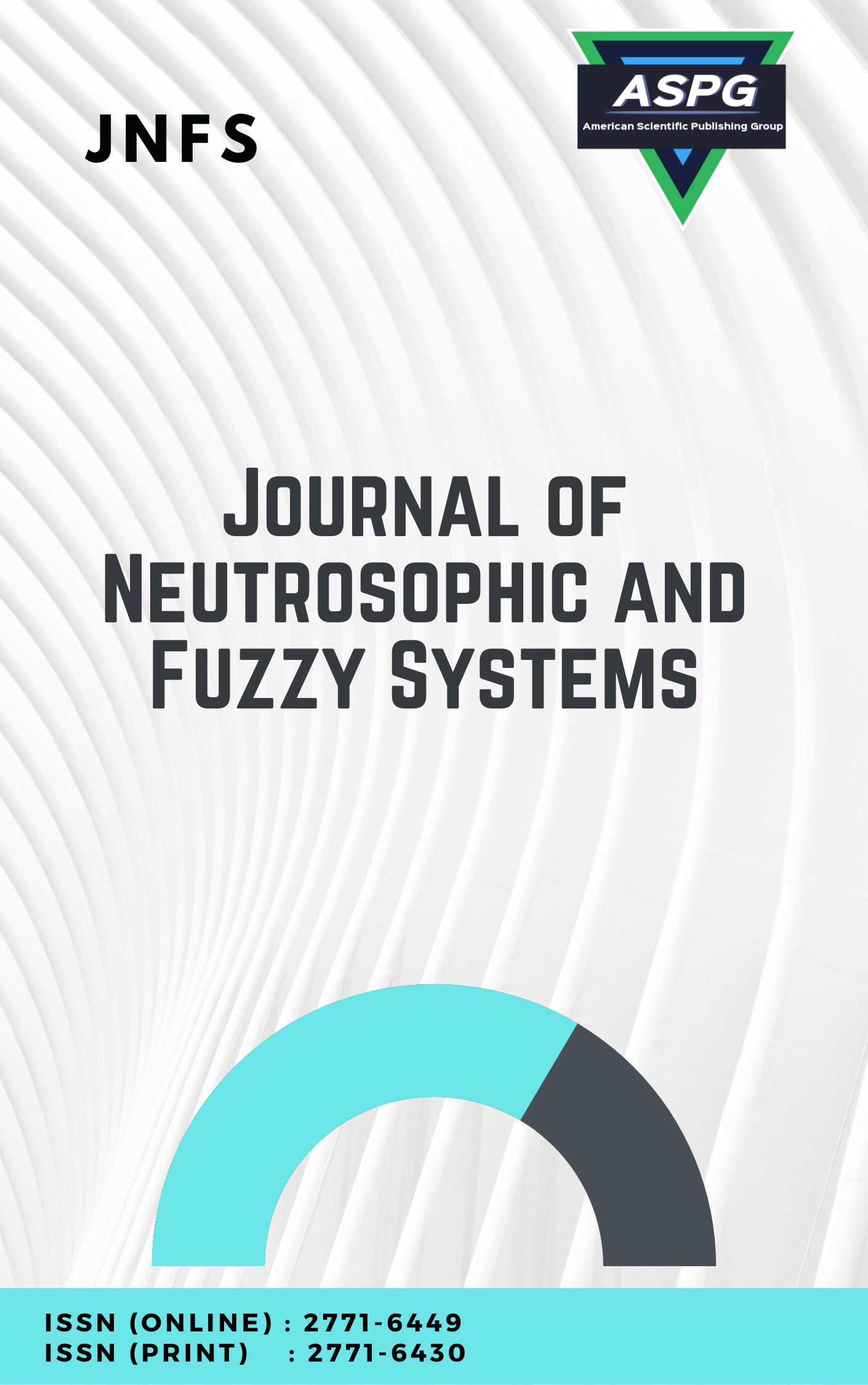

Volume 1 , Issue 1 , PP: 09-23, 2021 | Cite this article as | XML | Html | PDF | Full Length Article
Prem Kumar Singh 1 *
Recently, neutrosophic set is considered as one of the prominent tool to deal with human cognition in three-way fuzzy space. This set has given a way to characterize the human cognition in conscious, unconscious, or indeterminate state. The problem arises when a person realizes all of three states independently as silent mode. It is observed at voting time of Indian democratic system where some people vote in a favor of a party, do not vote in favor of a party, being absent and choose none of the above. The last consciousness is turiyam state which is independent from all. It also observed at time of feedback or rating given by an expert towards which used to based on internal communication rather than true, false and uncertain activity. The internal communication which prvodies the opinion towards rating about any organization or employee is called as Turiya or Fourth dimension cognition. This paper try to introduce this fourth dimension of human cognitions as a new set called as Turiyam set with its graphical visualization via an illustrative example.
Cognitive science , Neutrosophic set , Three-way decision space,Turiyam set , Fourth dimension ,
[1] Singh P. K., “Three-way fuzzy concept lattice representation using neutrosophic set”, International Journal of Machine Learning and Cybernetics”, Vol 8(1), pp. 69-79, 2017.
[2] Singh P. K., “Multi-granular based n-valued neutrosophic context analysis”, Granular Computing, Vol 5(3), pp. 287-301, 2020.
[3] Singh P. K., “Plithogenic set for multi-variable data analysis”, International Journal of Neutrosophic Sciences, Vol 1(2), pp. 81-89, 2020. doi: 10.5281/zenodo.3689808.
[4] Smarandache F., “Neutrosophy logic and set, nss”, 1995, http://fs.gallup.unm.edu/neutrosophy.htm
[5]Smarandache F., “Neutrosophy. Neutrosophic probability, set, and logic, ProQuest Information and Learning”, Ann Arbor, Michigan, USA, 1998.
[6] Smarandache F, “n-valued refine neutrosophic logic and its applications to physics”, Progress in Physics, Vol 4, pp. 143-146, 2013
[7] Smarandache F., “Plithogeny, Plithogenic Set, Logic, Probability, and Statistics”, Pons Publishing House, Brussels 2017.
[8] Smarandache F., “Extension of Soft Set to hyperSoft Set, and then to Plithogenic Hypersoft set”, Neutrosophic Set and System, Vol 22, pp. 168-170, 2018.
[9] Srinivasan N., “Consciousness without content: A look at evidence and prospects”, Front. Psychology, Vol 11, pp. 1992, 2020, https://doi.org/10.3389/fpsyg.2020.01992
[10] Atangana A., Mekkaoui T., “Trinition the complex number with two imaginary parts: Fractal, chaos and fractional calculus”, Chaos Solitions and Fractals, Vol 128, pp. 366-381, 2019.
[11] Singh P. K., “Turiyam set a fourth dimension data representation”, Journal of Applied Mathematics and Physics, Vol. 9(7), pp. 1821-1828, 2021, DOI: 10.4236/jamp.2021.97116
[12] Singh P. K., “Fourth dimension data representation and its analysis using Turiyam Context”, Journal of Computer and Communications, Vol. 9(6), pp. 222-229, 2021. DOI: 10.4236/jcc.2021.96014
[13] Singh PK, “Single-valued Plithogenic graph for handling multi-valued attribute data its context. International Journal of Neutrosophic Sciences, Vol 15(2), pp. 98-112, 2021, Doi : 10.5281/zenodo.5482171
[14] Singh, P. K., “NeutroAlgebra and NeutroGeometry for Dealing Heteroclinic Patterns”. In: Theory and Applications of NeutroAlgebras as Generalizations of Classical Algebras, IGI Global Publishers, 2021, (Accepted for Publications)